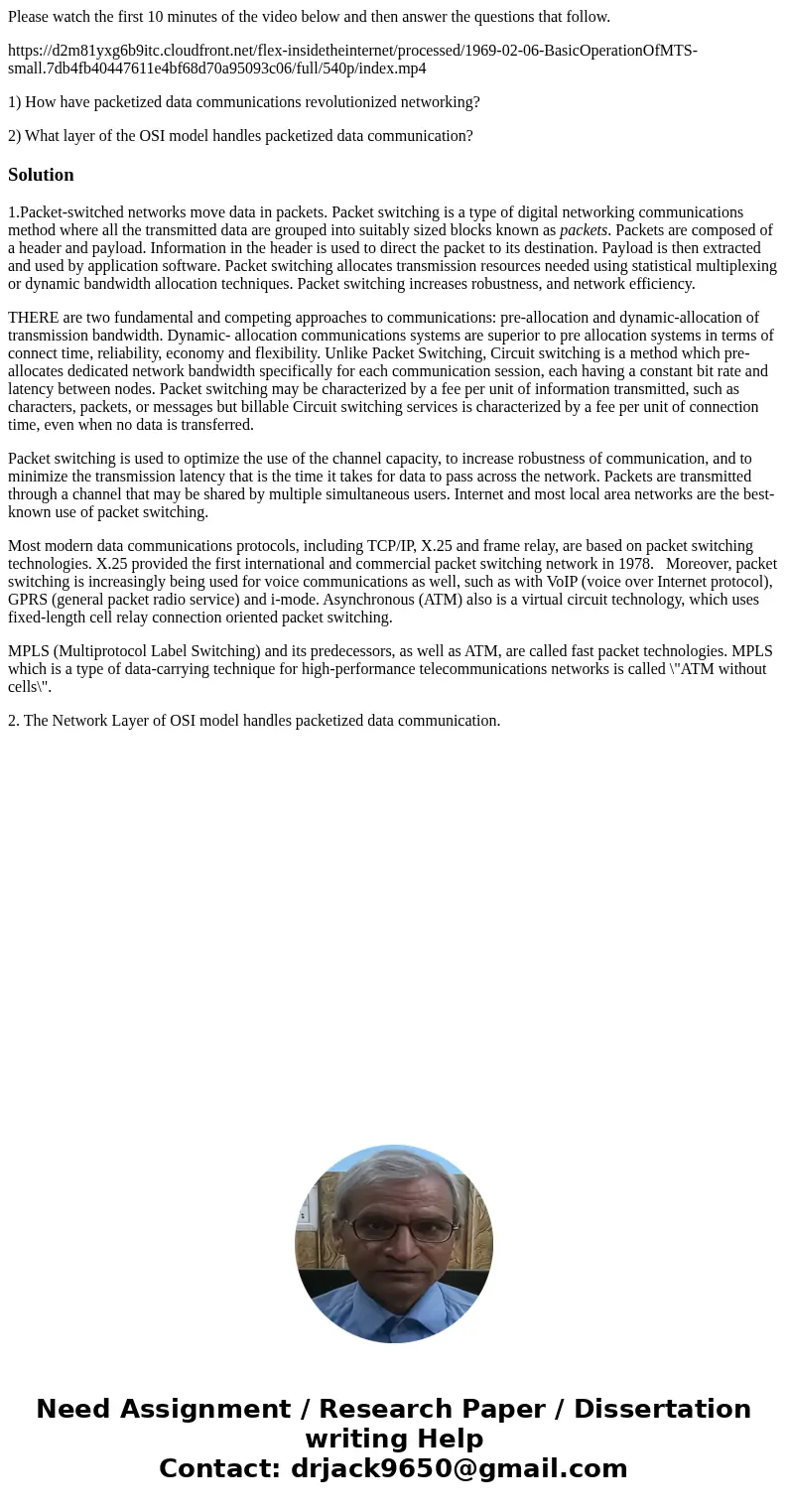Please watch the first 10 minutes of the video below and the
Please watch the first 10 minutes of the video below and then answer the questions that follow.
https://d2m81yxg6b9itc.cloudfront.net/flex-insidetheinternet/processed/1969-02-06-BasicOperationOfMTS-small.7db4fb40447611e4bf68d70a95093c06/full/540p/index.mp4
1) How have packetized data communications revolutionized networking?
2) What layer of the OSI model handles packetized data communication?
Solution
1.Packet-switched networks move data in packets. Packet switching is a type of digital networking communications method where all the transmitted data are grouped into suitably sized blocks known as packets. Packets are composed of a header and payload. Information in the header is used to direct the packet to its destination. Payload is then extracted and used by application software. Packet switching allocates transmission resources needed using statistical multiplexing or dynamic bandwidth allocation techniques. Packet switching increases robustness, and network efficiency.
THERE are two fundamental and competing approaches to communications: pre-allocation and dynamic-allocation of transmission bandwidth. Dynamic- allocation communications systems are superior to pre allocation systems in terms of connect time, reliability, economy and flexibility. Unlike Packet Switching, Circuit switching is a method which pre-allocates dedicated network bandwidth specifically for each communication session, each having a constant bit rate and latency between nodes. Packet switching may be characterized by a fee per unit of information transmitted, such as characters, packets, or messages but billable Circuit switching services is characterized by a fee per unit of connection time, even when no data is transferred.
Packet switching is used to optimize the use of the channel capacity, to increase robustness of communication, and to minimize the transmission latency that is the time it takes for data to pass across the network. Packets are transmitted through a channel that may be shared by multiple simultaneous users. Internet and most local area networks are the best-known use of packet switching.
Most modern data communications protocols, including TCP/IP, X.25 and frame relay, are based on packet switching technologies. X.25 provided the first international and commercial packet switching network in 1978. Moreover, packet switching is increasingly being used for voice communications as well, such as with VoIP (voice over Internet protocol), GPRS (general packet radio service) and i-mode. Asynchronous (ATM) also is a virtual circuit technology, which uses fixed-length cell relay connection oriented packet switching.
MPLS (Multiprotocol Label Switching) and its predecessors, as well as ATM, are called fast packet technologies. MPLS which is a type of data-carrying technique for high-performance telecommunications networks is called \"ATM without cells\".
2. The Network Layer of OSI model handles packetized data communication.

 Homework Sourse
Homework Sourse